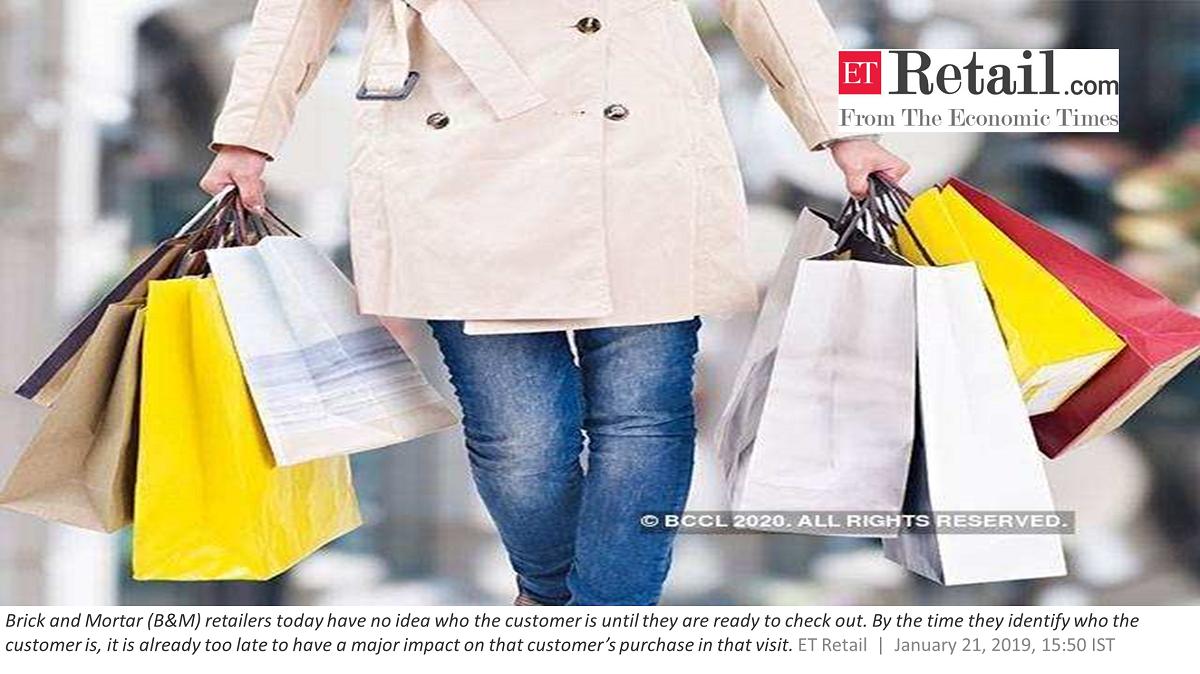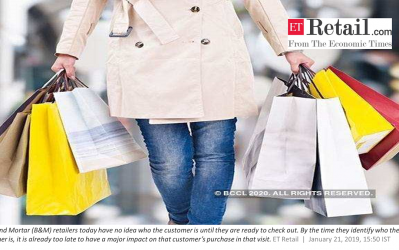
When I moved to United States, I vividly remember watching a news on TV in the late 1980s, about a person driving a car in reverse on the freeway. Some of us today even have difficulty reversing out of garage without a camera or sensor, whereas this person was driving the car in reverse at full speed on the interstate. I am not sure if you have ever tried it, but it is quite challenging, if not impossible. More so if you are competing with others who are driving in the right direction, driving your car in reverse will be a huge handicap to overcome.
Carrying this analogy to retailing, Brick and Mortar (B&M) retailers today have no idea who the customer is until they are ready to check out. By the time they identify who the customer is, it is already too late to have a major impact on that customer’s purchase in that visit. At best they can encourage future visits using loyalty and similar techniques. In contrast when a person is shopping on eCommerce site, there are a variety of techniques where the eCommerce site knows who the person is, or at least what income group / region/ preference the person has, based on the persons interaction with their digital interface.
This reminds me of a joke about drivers from one state in USA – they love to give their turn signal after they turn to show where they came from rather than where they are going. Traditional retailers have similar handicap as they are identifying their customers as the customers are getting ready to leave the store rather than when the customer comes in.
To top this, B&M retailers are sold technologies like traditional analytics, a data entry based PoS that uses past shopping behavior trends rather than being proactive to what is happening in the present, including current trends. Companies mine the data from the past using traditional algorithms to predict and plan for their inventory levels for the coming season. So, it is not surprising that they are not prepared to respond to changing customer buying behavior, let alone to new product or the market trends as the customer profile shifts from Baby Boomers to Millennials!!! Retailers today should definitely take advantage of the latest Machine Learning and Artificial Intelligence (Neural Networks CNN / RNN including Reinforcement learning and GANs) based techniques that have the ability to respond to changing trends lot faster than the traditional analytic techniques.
Traditional techniques sold in the market today reminds me of an effort of one of our customers in United States (number 3 retailer at the time with $50+ billion in revenue) where they spent 100s of millions of dollars to build an analytic system. However, the system, using the computing technique of 1990s, failed to find the sales of certain product by zip code; now a trivial problem using latest cloud-based computing! In fact, the CIO of this retailer, a close friend of mine, told me that he had spent a lot of money with one of the top technology company to build this shiny toy – a car (Analytic Engine) which is sitting in his garage. He has lots of people on his staff polishing the car every day, checking the tire pressure, engine oil level, coolant etc., however, no one on his staff knows how to drive this car!!! Unfortunately, I lost this friend to a serious illness. However, if he was with us today, he would be very proud and excited that his forward-looking initiative ZLE (Zero Latency Environment) of 1990’s is not only a realty today but a huge differentiator for B&M retailers. It was his forward thinking that possibly allowed Amazon to get a break to handle this retailer’s online business in late 1990’s / early 2000’s before Amazon became a major player in this industry.
During one of my visits to India, a CEO of a retail chain, with over thirty thousand locations, took time out of his busy schedule to show me one of his stores. While inspecting the store, the CEO realized that the store manager had not taken time to install a simple token system provided by the corporate office to solve his seasonal queueing problem when the lines were getting too difficult to manage at his point of sale. This dynamic CEO took time to personally help install the token system and get his store ready to handle the queue. However, I learned recently that instead of adopting latest technology to improve the check-out process, they will be deploying an ERP data entry system which may possibly take even longer to get a customer checked out, making this problem even worse! I am sure there are many other factors that forced this retailer to deploy an ERP data entry system rather than a state-of-the-art advance store system. However, this is a driving in reverse in a true literal sense!
For the past decade, a lot of top vendors are peddling their traditional systems in the Asia Pacific (especially, Indian) market like the shiny toy that my friend bought in 1990’s. In our humble opinion it is about time that retailers adapt to new technologies and let it lead them into a new era of retailing, away from the current state where they seem to have insurmountable challenges of competing with eCommerce retailers. At a minimum, they should allow some innovative Artificial Intelligence / cloud-based technology to enable them to better compete with eCommerce retailers and take back the market!!!
Author: Swetank Shekhar, Founder & chief strategy officer of E3 Retail, LLC
———–<><><>————
Published in:


